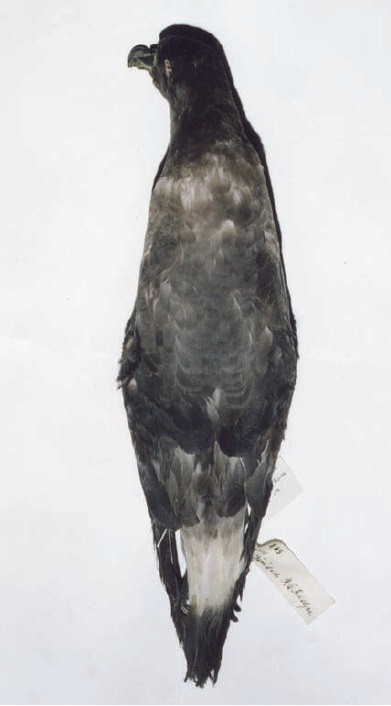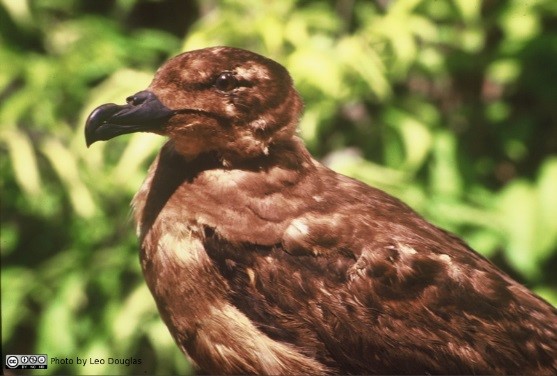Birdfinding.info ⇒ Last reported with certainty in 1879. Nested in burrows on the upper slopes of the Blue Mountains—its local name was the Blue Mountain Duck. Some historical reports suggest that it likely nested in the John Crow Mountains as well.
Jamaican Petrel †
Pterodroma caribbaea
Extinct. Formerly bred in Jamaica’s eastern mountains. The extent of its nonbreeding range at sea is unknown, other than the waters around Jamaica. The breeding season reportedly lasted almost all year, from September through July. The cause of its extinction was likely nest predation by introduced rats or mongoose.
There have been numerous attempts to “rediscover” the Jamaica Petrel in the mountains of Jamaica and its surrounding waters, but thus far no indication that it persists. The pioneering Caribbean ornithologist James Bond believed he had observed one in 1936 west of the Bahamas, but it may have been a dark morph Trindade Petrel.
Identification
A large, all-dark Pterodroma with a silvery-gray rump. Overall coloration reportedly varied from brown to blackish gray. If the species still exists and is ever re-sighted, its dark plumage and pale rump should make it recognizable.
The only mostly dark Pterodroma currently known to occur regularly in the western North Atlantic is the dark morph of Trindade Petrel, which has pale highlights in the wings, particularly the underwings, and has a dark rump.

Jamaican Petrel, dorsal view—note pale gray rump. © Bernard Zonfrillo

Jamaican Petrel, ventral view. © Bernard Zonfrillo
Notes
Monotypic species. Formerly considered conspecific with Black-capped Petrel (P. hasitata), but the basis for this was weak.
References
Hume, J.P. 2017. Extinct Birds (Second Edition). Bloomsbury Publishing PLC, London.
Lee, D.S., W.A. Mackin, and B. Zonfrillo. 2014. Jamaica Petrel. West Indian Breeding Seabird Atlas, http://www.wicbirds.net/jape.html. (Accessed November 17, 2017.)
Zonfrillo, B. 2016. A further specimen of the extinct Jamaica Petrel. Bulletin of the British Ornithological Society 136:209-214.
